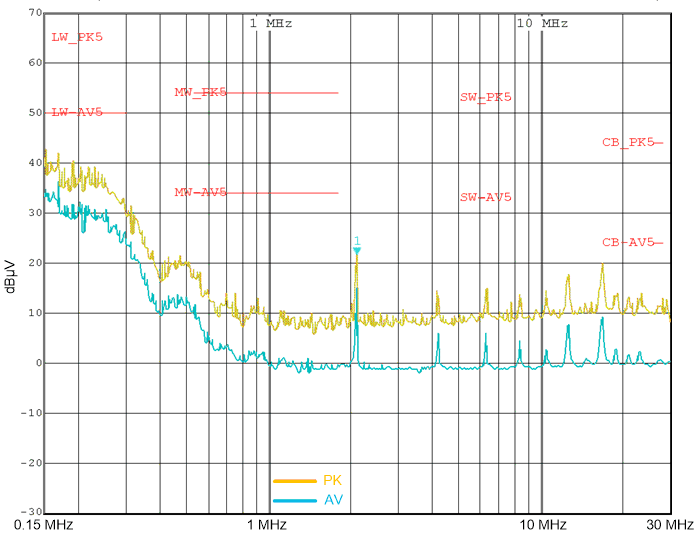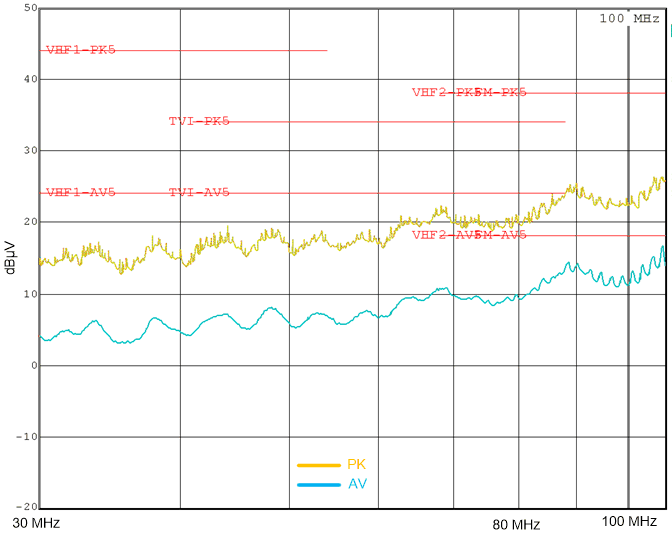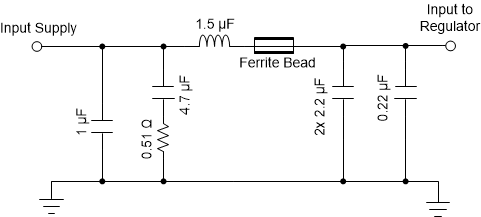SNVSBO7A July 2020 – July 2021 LM63610-Q1
PRODUCTION DATA
- 1 Features
- 2 Applications
- 3 Description
- 4 Revision History
- 5 Device Comparison Table
- 6 Pin Configuration and Functions
- 7 Specifications
- 8 Detailed Description
- 9 Application and Implementation
- 10Power Supply Recommendations
- 11Layout
- 12Device and Documentation Support
- 13Mechanical, Packaging, and Orderable Information
Package Options
Mechanical Data (Package|Pins)
Thermal pad, mechanical data (Package|Pins)
Orderable Information
9.2.4 EMI Performance Curves
EMI results critically depend on PCB layout and test setup. The results given here are typical and given for information purposes only. Figure 9-26 shows the used EMI filter. The limit lines shown refer to CISPR25 class 5.

| LM63625DQ | VOUT = 5 V | ƒSW = 2100 kHz |
| IOUT = 2.5 A | Dither |

| LM63625DQ | VOUT = 5 V | ƒSW = 2100 kHz |
| IOUT = 2.5 A | Dither |

Input filter used only for EMI measurements shown
in the EMI Performance Curves section.
Figure 9-26 Typical Input EMI Filter with LM63625